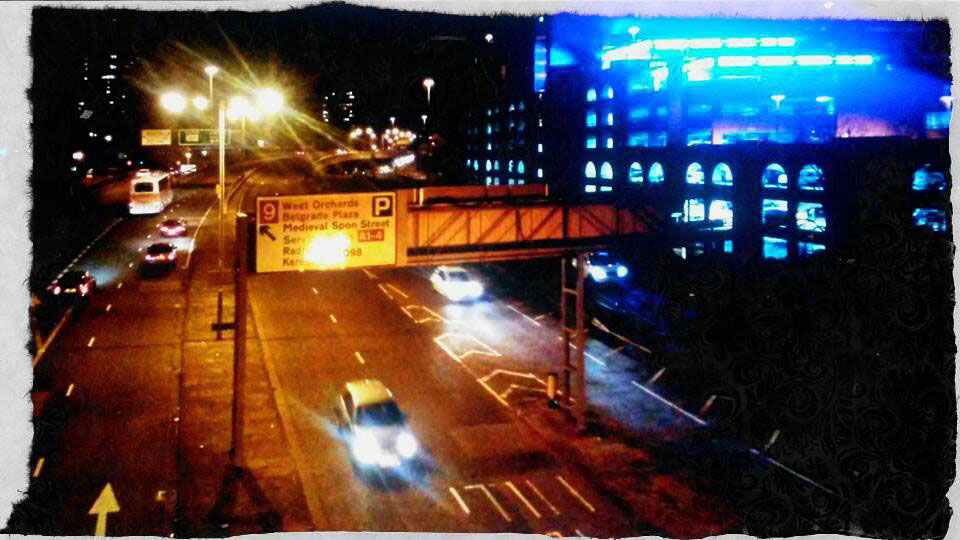4. Genre by tara rutledge
student id number: 6660743
A Day in the Life of a Taxi Driver fits quite clearly into the documentary genre. It adheres to the Oxford Dictionary’s definition of documentary as, “a film or television or radio programme that provides a factual report on a particular subject” and meets an audience’s expectations of what a documentary is. These codes and conventions are important in genre as a film’s style, and look, help an audience recognize it and decode and make sense of media that much faster if it fits into a format they are familiar with. It also helps producers in their decision making as to where to schedule a programme, who to aim it at, how to distribute it, which advertising will fit well with it and how popular it will be. Genre is also a great marketing tool as it means a film or programme can be directed straight to it’s target audience, which has already been clearly defined. (The subject of audience is looked into in more detail in the first chapter found on pages 6-9)
The Modalities of Documentary Language
The documentary genre, like most others, is not rigid. It splits off into many sub-genres, makes many crossovers and adapts and changes over time. Steve Neale explains that ‘genre are instances of repetition and difference’. Although genres specialise in showing us the familiar, they still need to keep adapting to stay current and fashionable to today’s viewers. To challenge this new audience and keep them interested they often become hybrids. Think of the, now very popular, ‘scripted reality’ shows that mix documentary with drama i.e. The Only Way is Essex (2010 – present) ITV2, Geordie Shore (2011 – present) MTV.

They take the familiar documentary style of observing and recording people’s lives, combined with talking to camera interviews and name prompts on the screen. These conventions are referred to by Saussure as the paradigmatic. They then combine with scripted portions of high drama and a popular, chart music soundtrack which is less familiar; the syntagmatic. They are very different to the first documentary, or ‘actuality’ as Grierson referred to it, Exiting the Factory by Auguste and Louis Lumiere.
The Day in the Life of Taxi Driver is certainly not ‘scripted reality’, it follows a more traditional documentary style and using John Corner’s Modalities of Documentary Language, we can begin to look into it’s sub-genre. John Corner believed there were two guidelines for modalities of documentary language, shown in the table below. A modality is ‘a particular mode in which something exists or is experienced or expressed’ (thefreedictionary.com). Within both of these modes are several subcategories.
Visual
• Reactive Observationalism
• Proactive Observationalism
• Illustrative
• Associative Method
Modes of Speech
• Overheard Exchange
• Testimony
• Expositional Mode
A Day in the Life of a Taxi Driver fits into the third visual category, illustrative. What we see on the screen acts in support of the interviewee’s testimony but can only be partially verified. For modes of speech the film fits into both testimony and expositional mode. We hear first hand accounts from the drivers, their testimony, and direct address from the interviewers posing the questions, expositional.
Modes of Documentary
Corner was not the only theorist to try and dissect the genre, Bill Nicholls used an altogether different method of characterising documentary. Instead of dividing it into modalities of language he split the genre into six independent sub-genres; poetic, expository, participative, observational, reflexive and performative. A Day in the Life of a Taxi Driver doesn’t just fit into one category here it fits into two, both observational and participatory. Observational, as we witness events happening but this is not totally without intervention from the filmmakers. It becomes participatory when the interviewees ask questions and are seen in the shot reacting to the information they are given, “that’s a long day” etc. It also shows the interviewer’s empathy with the drivers which helps to connect the audience to the characters on screen.

At both the beginning and the end of A Day in the Life of a Taxi Driver a speeded up sequence of traffic, driving around Coventry’s busy ring road, is viewed. First in daylight and then at dusk, this is a common documentary convention to show the passing of time and aid the story’s linear narrative. A similar fast forward sequence is also utilised in the documentaries World’s Busiest Railway (2015) BBC and Psycho: Kill me if you can (2003) Channel 4.
Another convention used within A Day in the Life of a Taxi Driver is interviews from the drivers being heard while corresponding footage, which illustrates what they are describing, is viewed on the screen. During the first interview we see a shot of the NatWest bank, when a driver shares his eyewitness narrative concerning a bank robbery, and then a panning shot of the taxi rank as the second driver describes where they spend their break time. This technique is regularly used in Crimewatch (1984 - present) BBC, where it is taken a step further with reenactment footage enhancing the narrative.
The Day in the Life of a Taxi Driver also includes talking head shots. This is a popular film technique often employed in BBC’s 2015 tv series Traffic Cops, along with voice over narration, a documentary convention that goes unused in A Day in the Life of a Taxi Driver. This helps the taxi driver’s testimony to stay untainted as we have no narrator to guide or possibly manipulate the audience’s thoughts and opinions. Instead they are left to form their own conclusions on the footage they have seen. Yet the footage the production team chose to remove and the way the film has been edited may actually reveal more about the director’s intent than what we see in the film itself. A Day in the Life of a Taxi Driver is far more light hearted than other taxi driver films in it’s genre and the stories revealed are not as dark or melancholy. The film’s upbeat music and the director’s choice of less serious questions have a lot to do with this. In contrast to The Unfortunate Taxi Driver (Mark Fraher, 2012). This documentary follows a struggling Nigerian taxi driver, working in Cork, who tells us a series of unhappy events that have occurred during his driving career, prompted by Fraher’s selection of questions and enhanced by the somber choice of soundtrack. The importance of editing and music selection and it’s links with genre are considered further in the next chapter, Music and the Final Cut.